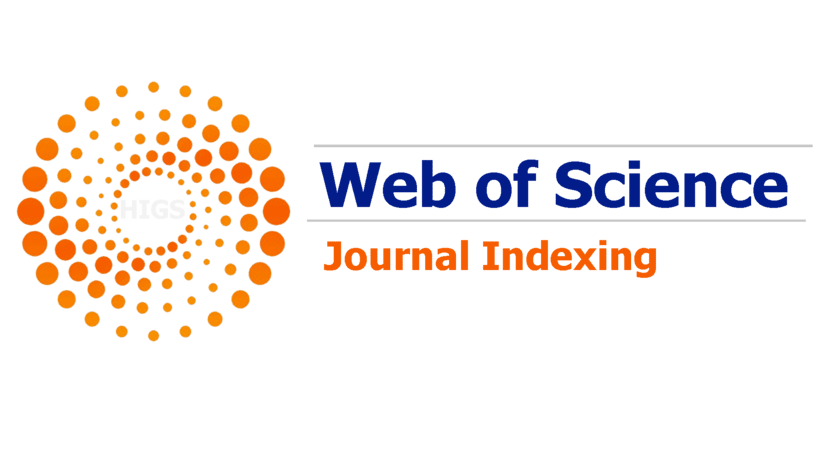Análises morfológicas e moleculares de Eustrongylides sp. (Nematoda: Dioctophymatidae) em zebrafish (Danio rerio) do Brasil
DOI:
https://doi.org/10.20950/1678-2305/bip.2024.51.e936Palavras-chave:
Nematoides de peixe, 18S rRNA, Parasitismo, Monitoramento da saúdeResumo
O zebrafish, Danio rerio, é um importante modelo de organismo vertebrado em diversas disciplinas científicas. O presente estudo relata a presença da larva do nematoide Eustrongylides sp. em zebrafish de um pet shop, adquirido pela Fundação Oswaldo Cruz para estudos de toxicidade. Dados morfológicos e moleculares desse Nematoda são apresentados, contribuindo para a compreensão desse helminto e auxiliando estudos futuros. A ocorrência dessa larva demonstra a importância do controle do manejo do D. rerio, uma vez que esse peixe é amplamente utilizado como modelo experimental.
Referências
Altschul, S. F., Gish, W., Miller, W., Myers, E. W., & Lipman, D. J. (1990). Basic local alignment search tool. Journal of Molecular Biology, 215(3), 403-410. https://doi.org/10.1016/S0022-2836(05)80360-2
American Veterinary Medical Association (AVMA). (2013). AVMA guidelines for the euthanasia of animals. AVMA. Amsterdam, A., & Hopkins, N. (2006). Mutagenesis strategies in zebrafish for identifying genes involved in development and disease. Trends in Genetics, 22(9), 473-478. https://doi.org/10.1016/j.tig.2006.06.011
Associação Brasileira de Normas Técnicas (ABNT) (2016). NBR 15088/16. Ecotoxicologia aquática - Toxicidade aguda - Método de ensaio com peixes (Cyprinidae) (3ª ed.). ABNT.
Banzai, A., Tanikawa, T., Kimura, G., Sasaki, T., & Kawakami, Y. (2018). Parasitic helminths collected from the brown rat, Rattus norvegicus, in Chuo Ward, Tokyo, Japan. Medical Entomology and Zoology, 69(4), 171-176. https://doi.org/10.7601/mez.69.171
Barros, L. A., Oliveira, R. D., Moraes Filho, J., Justino, C. D. S., & Mateus, L. D. F. (2009). Análise do parasitismo por Contracaecum sp. e Eustrongylides sp. em cacharas, Pseudoplatystoma fasciatum (Linnaeus, 1766) (Pisces: Pimelodidae) provenientes do rio Cuiabá, Mato Grosso, Brasil. Revista Brasileira de Ciência Veterinária, 16(2), 58-61. https://doi.org/10.4322/rbcv.2014.170
Blaxter, M. L., De Ley, P., Garey, J., Liu, L. X., Scheldeman, P., Vierstraete, A., Vanfleteren, J. R., Mackey, L. Y., Dorris, M., Frisse, L. M., Vida, J. T., & Thomas, W. K. (1998). A molecular evolutionary framework for the phylum Nematoda. Nature, 392, 71-75. https://doi.org/10.1038/32160
Borski, R. J., & Hodson, R. G. (2003). Fish Research and the Institutional Animal Care and Use Committee. ILAR Journal, 44(4), 286-294. https://doi.org/10.1093/ilar.44.4.286
Braunbeck, T., & Lammer, E. (2006). Fish embryo toxicity assays. Contract, 20, 725-731. Canadian Council on Animal Care (CCAC) (2005). Guidelines on the care and use of fish in research, teaching and testing. CCAC. Conselho Nacional de Controle de Experimentação Animal (CONCEA) (2015). Diretriz da prática de eutanásia do CONCEA. Anexo I - Diretriz referente a procedimentos de eutanásia realizados em animais incluídos em atividades de ensino ou de pesquisa científica, Brasil. CONCEA.
Correa, L. L., Soares, G. B., Müller, M. I., & Adriano, E. A. (2023). First morphological and molecular characterization of the genus Eustrongylides nematode larvae infecting fish in the Brazilian Amazon. Biologia, 78(10), 2855-2862. https://doi.org/10.1007/s11756-023-01422-6
Eiras, J. C., Pavanelli, G. C., Takemoto, R. M., Yamaguchi, M. U., Karkling, L. C., & Nawa, Y. (2016). Potential risk of fish-borne nematode infections in humans in Brazil–current status based on a literature review. Food and Waterborne Parasitology, 5, 1-6. https://doi.org/10.1016/j.fawpar.2016.08.002
Floyd, R., Abebe, E., Papert, A., & Blaxter, M. (2002). Molecular barcodes for soil nematode identification. Molecular Ecology, 11(4), 839-850. https://doi.org/10.1046/j.1365-294X.2002.01485.x
Franceschini, R., Guardone, L., Armani, A., Ranucci, D., Roila, R., Valiani, A., Susini, F., & Branciari, R. (2022). Five-years management of an emerging parasite risk (Eustrongylides sp., Nematoda) in a fishery supply chain located on Trasimeno Lake (Italy). Food Control, 136, 108858. https://doi.org/10.1016/j.foodcont.2022.108858
Fusco, M. A., Rizzo-Valente, V. D. S., Vizzoni, V. F., Miranda, R. S. D., Aguiar, C. C. D., & Escaleira, R. D. C. (2023). An outbreak of the nematode parasite Eustrongylides spp. (Nematoda: Dioctophymatidae) in a zebrafish (Danio rerio) facility. Zebrafish, 20(3), 126-130. https://doi.org/10.1089/zeb.2022.0041
Grunwald, D. J., & Eisen, J. S. (2002). Headwaters of the zebrafish: emergence of a new model vertebrate. Nature Reviews Genetics, 3(9), 717-724. https://doi.org/10.1038/nrg892
Gueretz, J. S., Senger, S. B., & Claus, M. P. (2020). Ocorrência de Ithyoclinostomum sp. e Eustrongylides sp., parasitos de Hoplias aff. malabaricus Bloch, 1794 (Characiformes: Erythrinidae), no litoral de Santa Catarina, Brasil. Brazilian Journal of Development, 6(4), 21565-21575. https://doi.org/10.34117/bjdv6n4-359
Haque, E., & Ward, A. C. (2018). Zebrafish as a model to evaluate nanoparticle toxicity. Nanomaterials, 8(7), 561. https://doi.org/10.3390/nano8070561
Hodda, M. (2022a). Phylum Nematoda: a classification, catalogue and index of valid genera, with a census of valid species. Zootaxa, 5114(1), 1-289. https://doi.org/10.11646/zootaxa.5114.1.1
Hodda, M. (2022b). Phylum Nematoda: trends in species descriptions, the documentation of diversity, systematics, and the species concept. Zootaxa, 5114(1), 290-317. https://doi.org/10.11646/zootaxa.5114.1.2
Holterman, M., van der Wurff, A., van den Elsen, S., van Megen, H., Bongers, T., Holovachov, O., Bakker, J., & Helder, J. (2006). Phylum-wide analysis of SSU rDNA reveals deep phylogenetic relationships among nematodes and accelerated evolution toward crown Clades. Molecular Biology and Evolution, 23(9), 1792 1800. https://doi.org/10.1093/molbev/msl044
Honcharov, S. L., Soroka, N. M., Galat, M. V., Zhurenko, O. V., Dubovyi, A. I., & Dzhmil, V. I. (2022). Eustrongylides (Nematoda: Dioctophymatidae): Epizootology and special characteristics of the development biology. Helminthologia, 59(2), 127-142. https://doi.org/10.2478/helm-2022-0013
Howe, K., Clark, M., Torroja, C., Torrance, J., Berthelot, C., Muffato, M., Collins, J. E., Humphray, S., McLaren, K., Matthews, L., McLaren, S., Sealy, I., Caccamo, M., Churcher, C., Scott, C., Barrett, J. C., … & Stemple, D. L. (2013). The zebrafish reference genome sequence and its relationship to the human genome. Nature, 496, 498-503. https://doi.org/10.1038/nature12111
Kimmel, C. B., Ballard, W. W., Kimmel, S. R., Ullmann, B., & Schilling, T. F. (1995). Stages of embryonic development of the zebrafish. Developmental Dynamics, 203(3), 253-310. https://doi.org/10.1002/aja.1002030302
Kumar, V., Roy, S., Parida, S. N., Bisai, K., Dhar, S., Jana, A. K., & Das, B. K. (2024). Deciphering the impact of endoparasitic infection on immune response and gut microbial composition of Channa punctata. Frontiers in Cellular and Infection Microbiology, 14, 1296769. https://doi.org/10.3389/fcimb.2024.1296769
Kuraiem, B. P., Knoff, M., Telleria, E. L., Fonseca, M. C. G., Machado, L. S., Cunha, N. C., Nascimento, E. R., Fontenelle, G., Gomes, D. C., & São Clemente, S. C. (2020). Eustrongylides sp. (Nematoda, Dioctophymatoidea) parasitizing Hoplias malabaricus (Actinopterygii: Erythrinidae) collected from the state of Rio de Janeiro, Brazil. Revista Brasileira de Parasitologia Veterinária, 29(1), e014519. https://doi.org/10.1590/S1984-29612019094
Lignon, J. S., Stainki, T. M., & Monteiro, S. G. (2023). Eustrongylides spp. (Nematoda: Eustrongylidae) in Polypterus endlicheri in central Rio Grande do Sul, Brazil. Ciência Animal Brasileira, 24, e-74213. https://doi.org/10.1590/1809-6891v24e-74213E
Lima, F., Pozza, A., & Lehmann, P. (2019). Contracaecum spp. (Nematoda: Anisakidae) and Eustrongylides spp. (Nematoda: Dioctophymatidae) nematode larvae with zoonotic potencial found in two fish species from Tramandaí river basin, southern Brazil. Boletim do Instituto de Pesca, 45(3), e495. https://doi.org/10.20950/1678-2305.2019.45.3.495
Martins, M. L., de Souza Santos, R., Marengoni, N. G., Takahashi, H. K., & Onaka, E. M. (2009). Sazonalidade de larvas de Eustrongylides sp. (Nematoda: Dioctophymatidae) em peixes do Rio Paraná, Sudeste do Brasil. Boletim do Instituto de Pesca, 35(1), 29-37.
Mazzone, A., Cafara, M., Gustinelli, A., Agnetti, F., Sgariglia, E., Vaglio, G. L., Quaglio, F., & Fioravanti, M. L (2019). Morphological and molecular characterization of larval and adult stages of Eustrongylides excisus (Nematoda: Dioctophymatoidea) with histopathological observations. Journal of Parasitology, 105(6), 882 889. https://doi.org/10.1645/19-44
Moravec, F. (1998). Nematodes of freshwater fishes of the Neotropical Region. Academia. Organisation for Economic Co-Operation and Development (OECD) (1992). OECD 203/92 Guideline for testing of chemicals. Fish, acute toxicity test. OECD.
Padial, J. M., Miralles, A., De la Riva, I., & Vences, M. (2010). The integrative future of taxonomy. Frontiers in Zoology, 7, 16. https://doi.org/10.1186/1742-9994-7-16
Pekmezci, G. Z., & Bolukbas, C. S. (2021). Morphological and molecular characterization of Eustrongylides excisus larvae (Nematoda: Dioctophymatidae) in Sander lucioperca (L.) from Northern Turkey. Parasitology Research, 120(6), 2269-2274. https://doi.org/10.1007/s00436-021-07187-8
Rubinstein, A. L. (2003). Zebrafish: from disease modelling to drug discovery. Current Opinion in Drug Discovery Development, 6(2), 218-223.
Shamsi, S., Francis, N., Masiga, J., Barton, D. P., Zhu, X., Pearce, L., & McLellan, M. (2023). Occurrence and characterisation of Eustrongylides species in Australian native birds and fish. Food and Waterborne Parasitology, 30, e00189. https://doi.org/10.1016/j.fawpar.2023.e00189
Tamura, K., Stecher, G., & Kumar, S. (2021). MEGA11: molecular evolutionary genetics analysis version 11. Molecular Biology and Evolution, 38(7), 3022-3027. https://doi.org/10.1093/molbev/msab120
Vascotto, S. G., Beckham, Y., & Kelly, G. M. (1997). The zebrafish’s swim to fame as an experimental model in biology. Biochemistry and Cell Biology, 75(5), 479-485. https://doi.org/10.1139/o97-081
WoRMS Editorial Board (2024). World Register of Marine Species. WoRMS Editorial Board. https://doi.org/10.14284/170
Xiong, F., Li, W. X., Wu, S. G., Zou, H., & Wang, G. T. (2013). Molecular phylogeny and host specificity of the larval Eustrongylides (Nematoda: Dioctophmidae) from freshwater fish in China. Journal of Parasitology, 99(1), 137-144. https://doi.org/10.1645/GE-3163.1
Downloads
Publicado
Edição
Seção
Licença
Copyright (c) 2025 Melissa Querido Cárdenas, Gabriel de Farias Araujo, Jucicleide Ramos-de-Souza , Amanda Gleyce Lima de Oliveira, Enrico Mendes Saggioro

Este trabalho está licenciado sob uma licença Creative Commons Attribution 4.0 International License.









